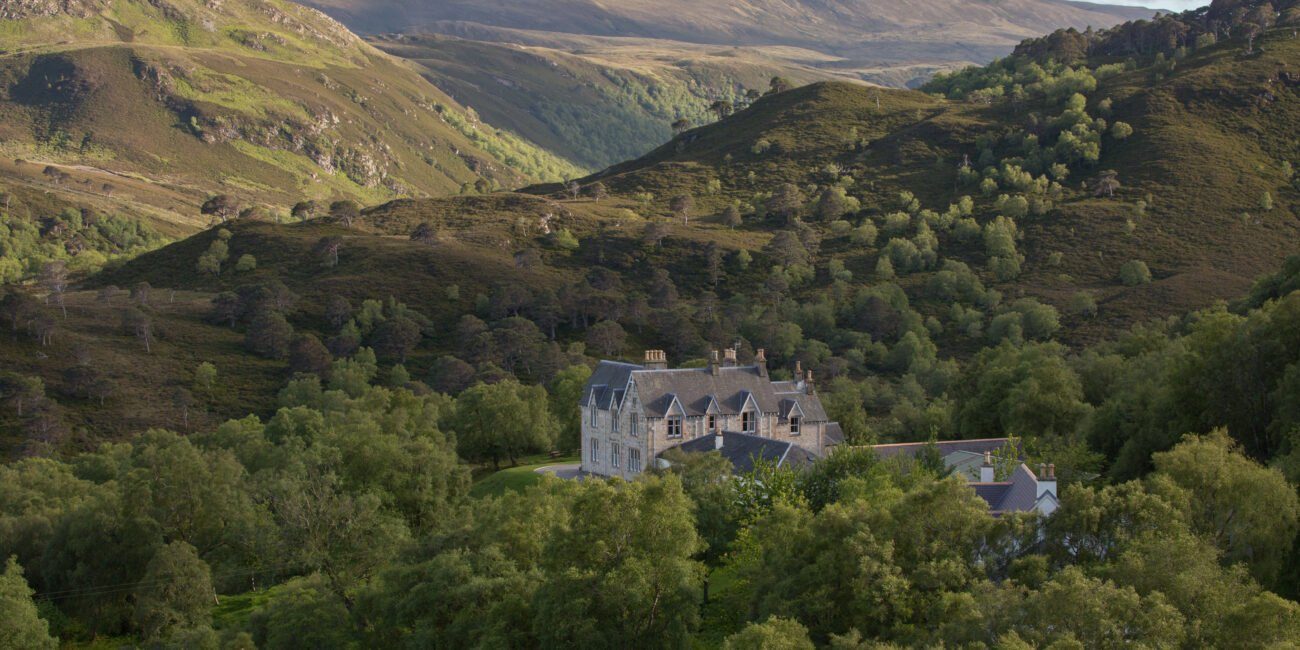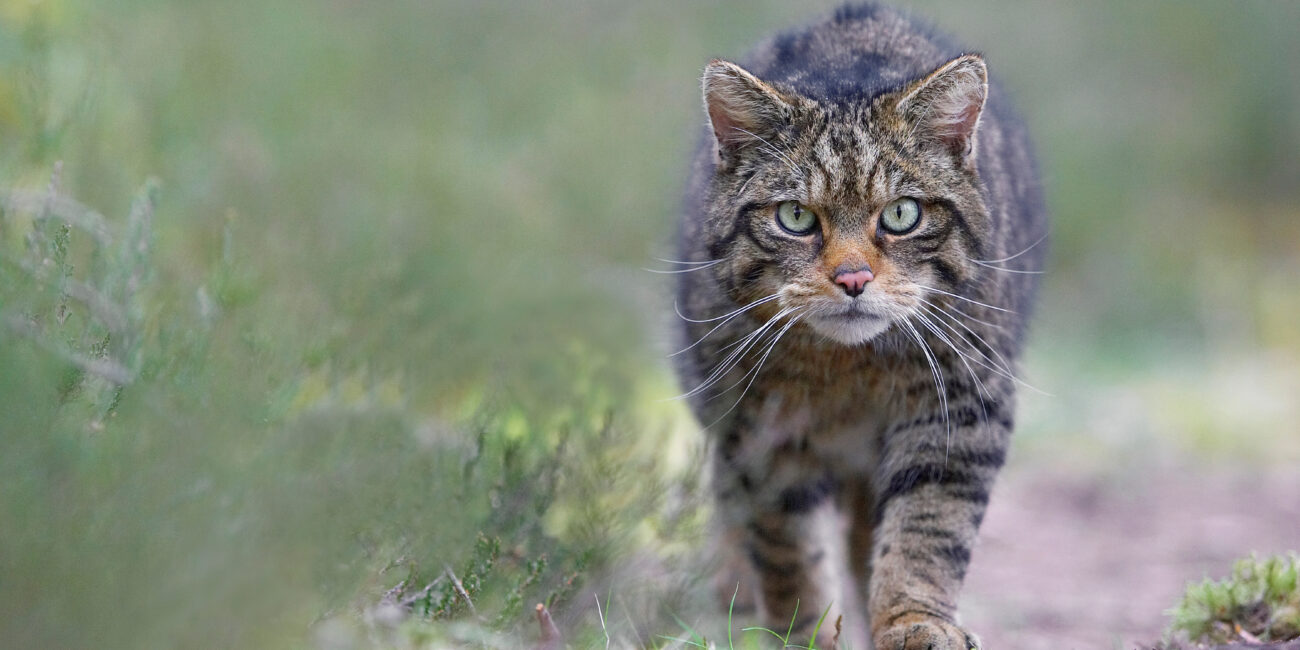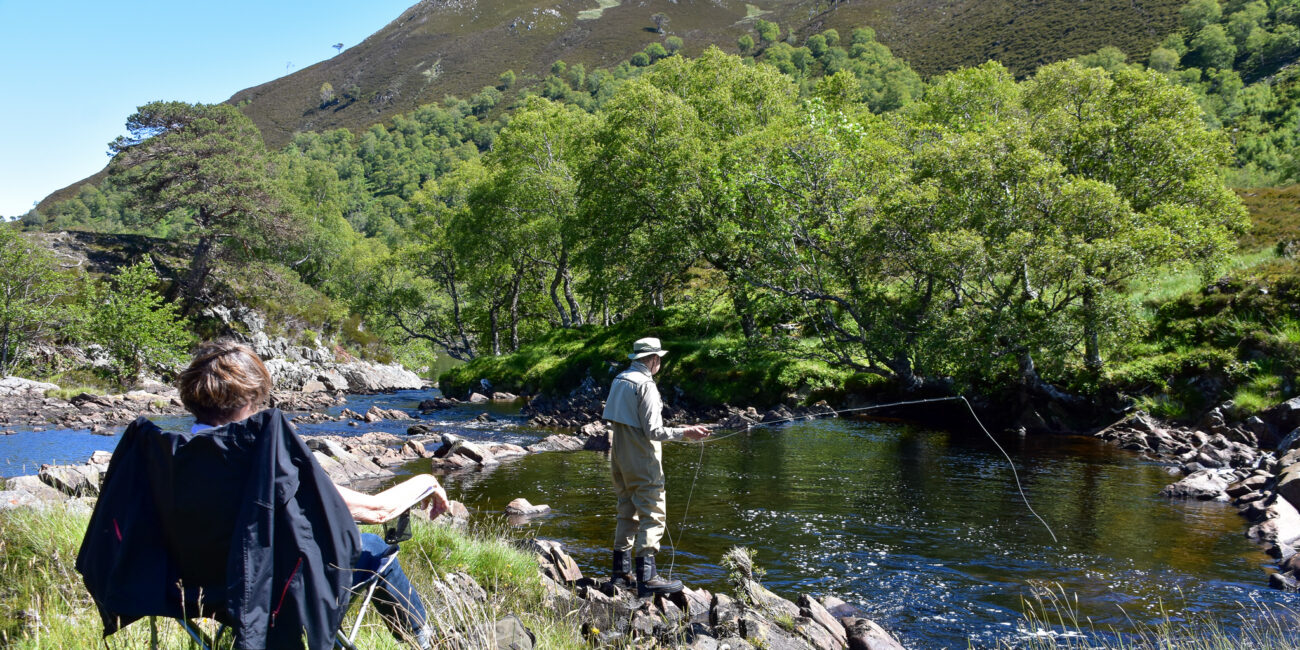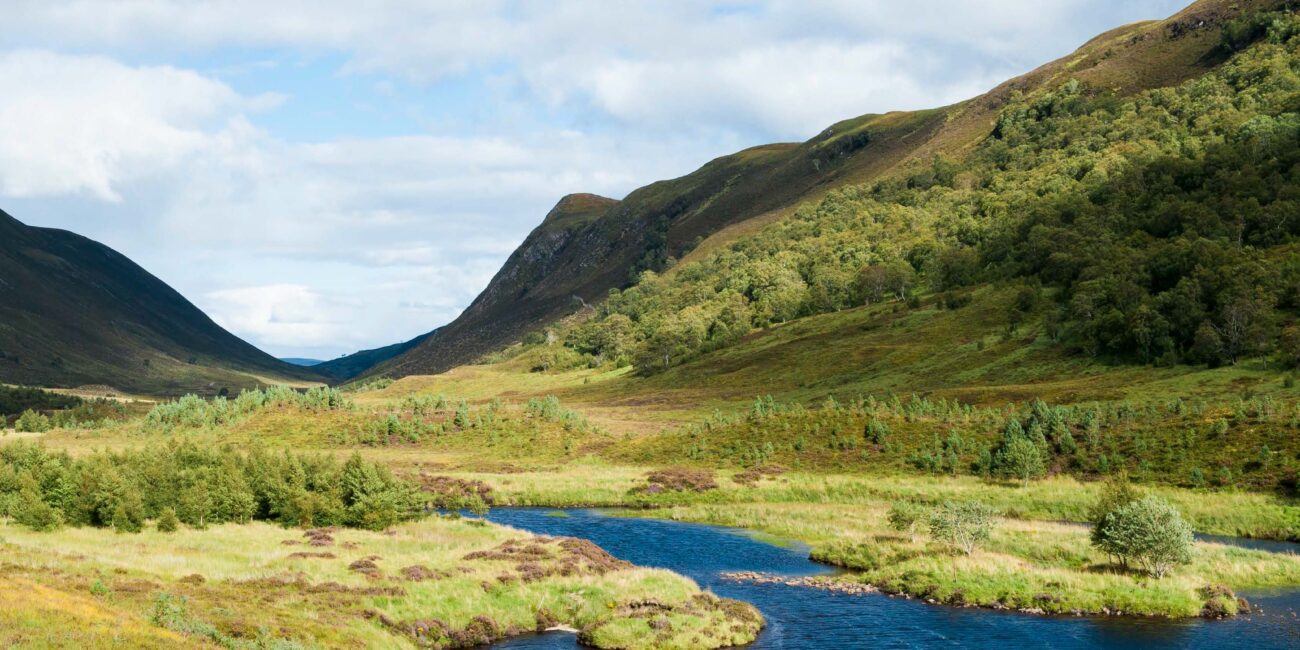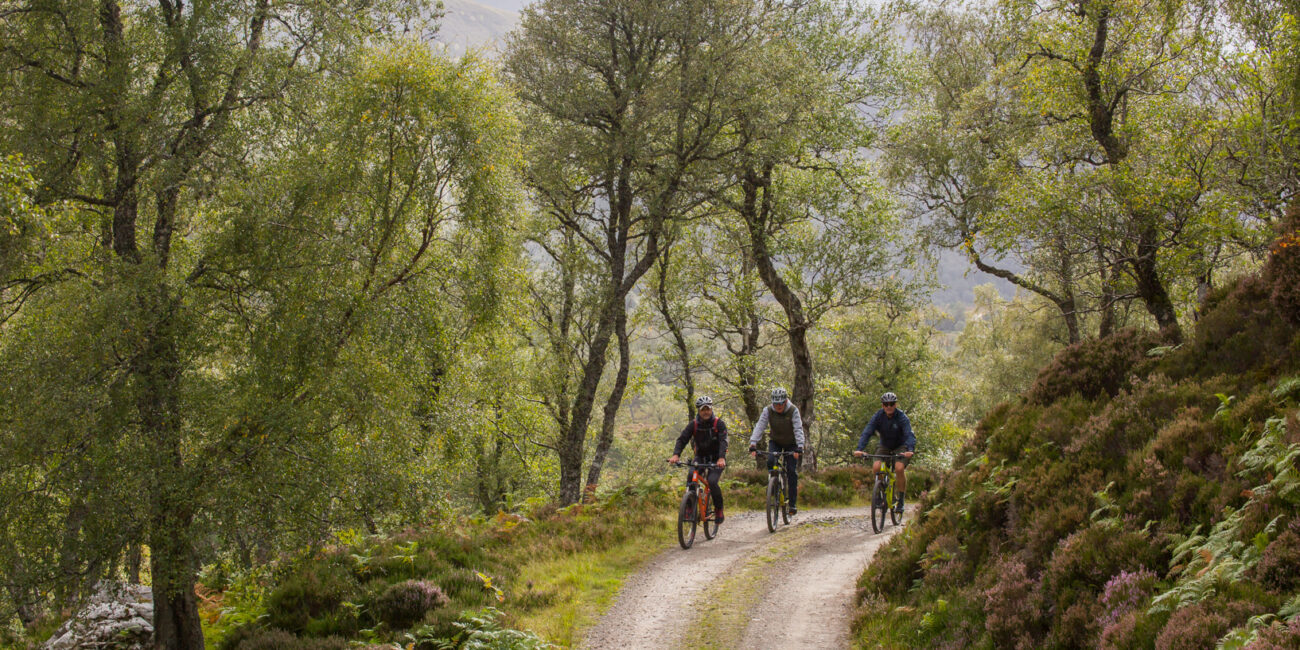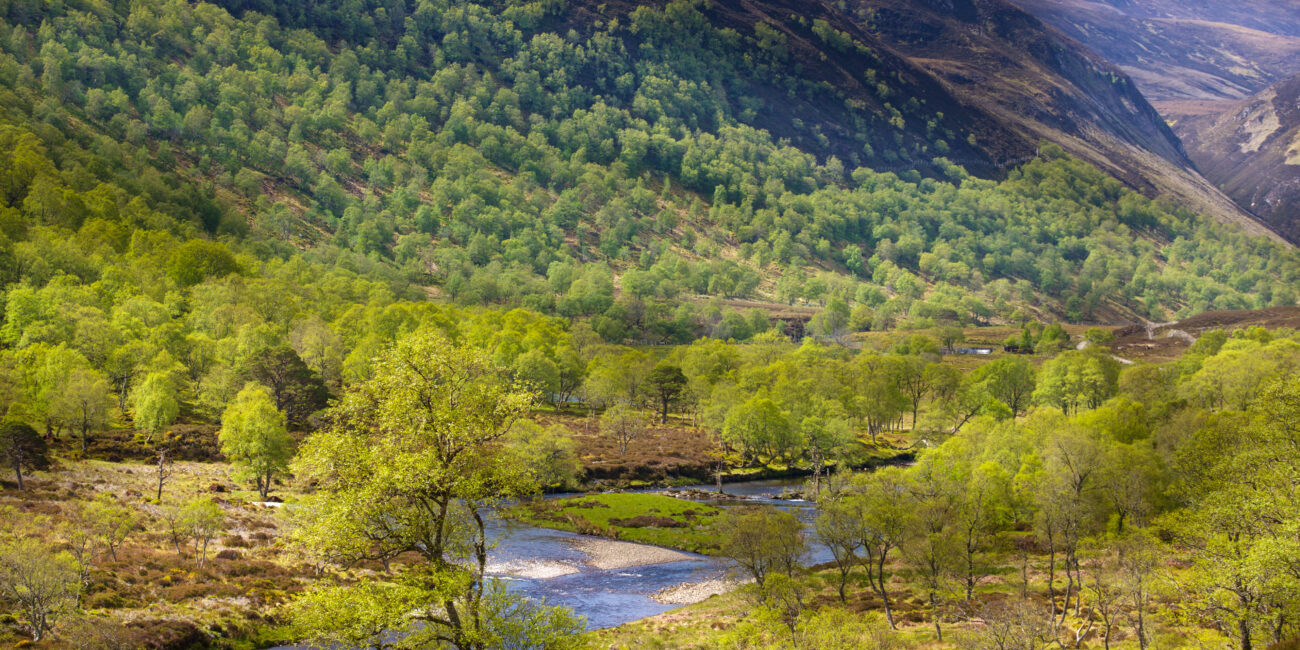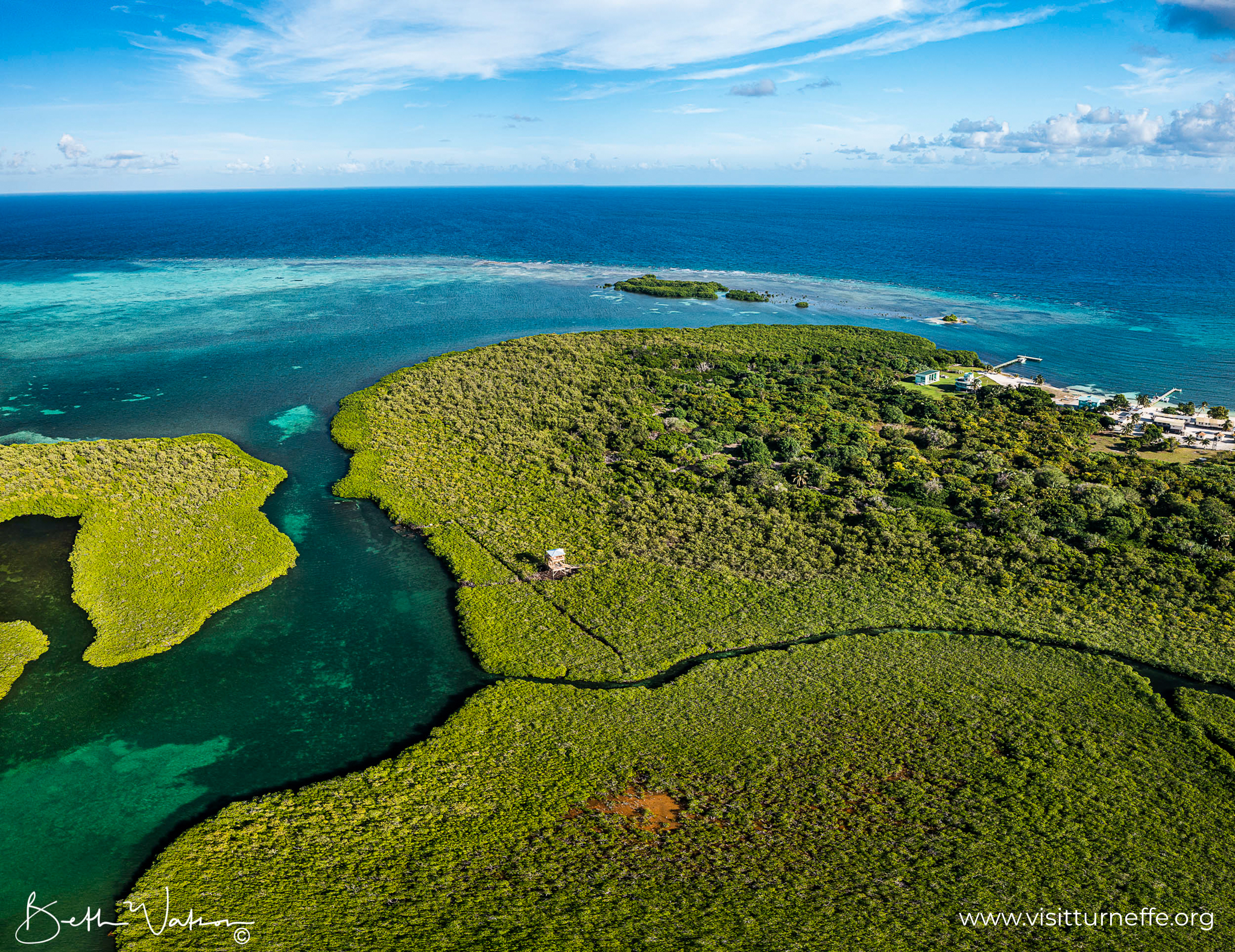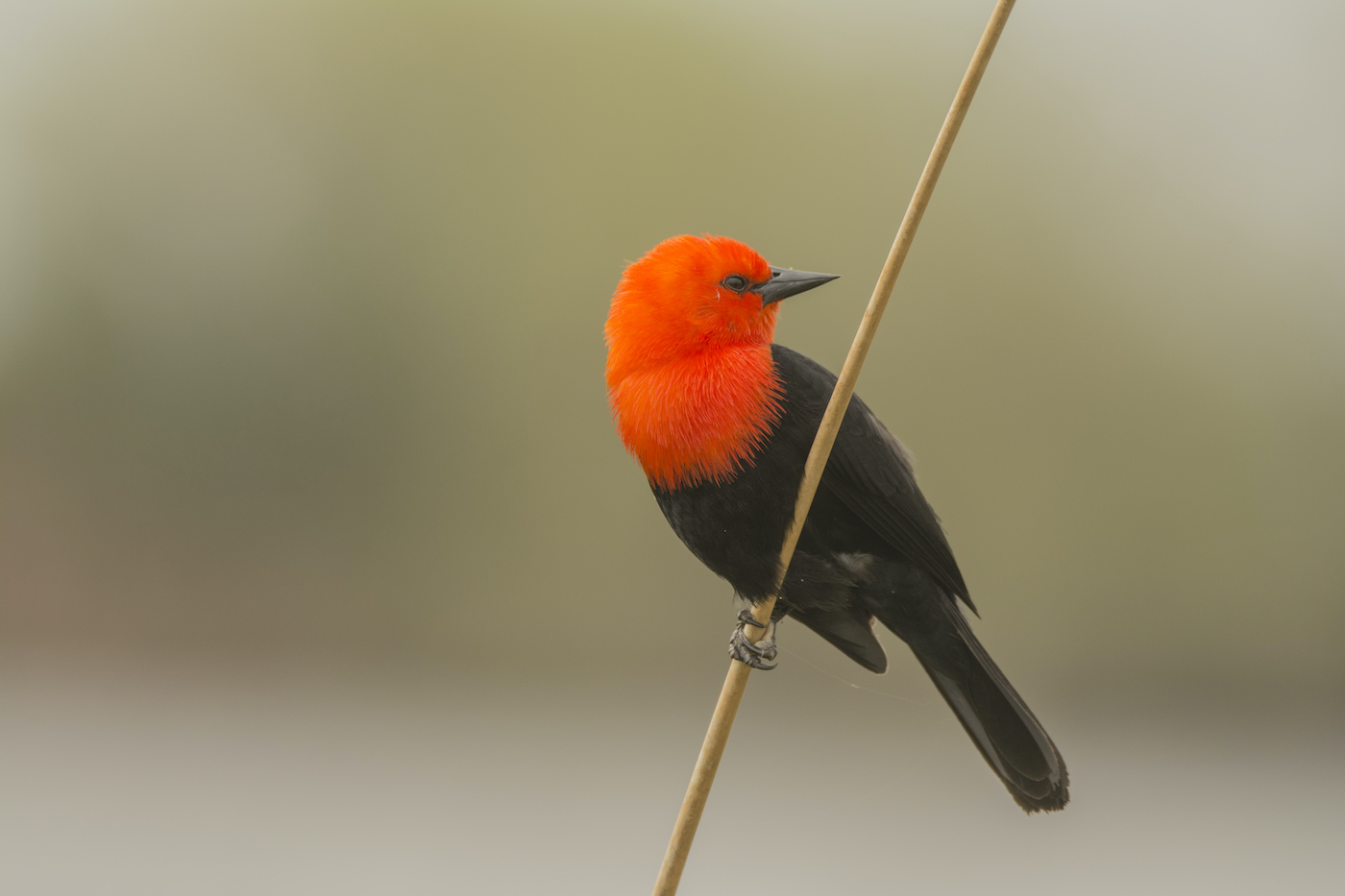Our drive from Inverness Airport to Alladale was easy and scenic – clear blue skies and a landscape patched with bright bursts of russet and gold led us further into the wilderness of the Scottish Highlands.
As we turned left past a bright red phone box and our car began the slightly bumpier trundle through winding wooded roads, dusk crept in and cast a twilight stillness over the moss covered trunks and bracken.
As though the residents of Alladale had rolled out the red carpet to welcome us, within five minutes we had passed three proud antler sets, belonging to beautiful red stags and Sika deer grazing near River Carron; two brown owls that swooped over the road ahead; a nightjar taking flight at the approach of our headlights; and a red squirrel with its characteristically bushy ears and tail, leaping between the neighbouring trunks.
Photo credit: Max Milligan
The ancient forests of Scotland have been shrinking for the last 4,000 years. First a cooler and wetter climate, then the axe, fire and livestock reduced natural forests to remnants scattered across the landscape.
Restoring woodland is central to the vision for Alladale Wilderness Reserve. Trees provide the foundation for everything – humus to enrich the soil, and a home for the fungi, plants and insects that are the building blocks of a healthy ecosystem. Between 2009 and 2012, to mitigate runoff, erosion and flooding events, Alladale has planted 920,000 mixed native trees throughout the Reserve’s riparian areas.
Our car began the final ascent, rounded a last corner, and suddenly there was Alladale Lodge, standing proudly on its hilltop with huge south-easterly windows overlooking the valley and glen. Five more red deer stags, completely unpeturbed by our arrival, watched us enter the lodge from where they grazed all but ten feet away.
We checked into our en-suite rooms (mine seeming more like a vast, softly carpeted suite equipped with armchairs, coffee and dressing tables and, most importantly, sweeping panoramic views over the native birchwood and centuries old Caledonian pine forests) and regrouped for a private screening of Isabella Tree and Charlie Burrell’s yet-to-be-released film on Knepp Estate. Moved by their epic tale of rewilding success in the face of adversity and against the odds, conversations were sparked and ideas shared with other environmentally-minded guests around Alladale’s dining room table.
Photo credit: Peter Cairns
Meals at Alladale are prepared by head chef, Natasha Buttigieg, using fresh local seafood, Alladale trout and venison, and vegetables from the Alladale Aquaponic Garden. On our first night, we feasted on fresh venison stew with perfectly crisped cauliflower cheese and a rainbow salad, followed by a thick, fluffy and steaming apple pie straight from the storybooks. After night caps before a roaring fire in Alladale’s spacious living room, it was off to enjoy a spectacularly dark, quiet and uninterrupted night’s sleep in my large and comfortable bed.
The next day I rose early for a quick walk before breakfast and ventured down to the fast-flowing Carron River, passing Alladale’s Aquaponic Garden and newly built Yoga & Wellness studio en route. In the 1.5 acre Aquaponic Garden, nutritious, organic vegetables, herbs, berries and fruits are grown in three large greenhouses and on an extensive array of raised beds, where trout excrement helps fertilise the beds and power comes from a hydro-turbine to create a zero-waste and zero-emissions ethical food production scheme.
After breakfast, we headed out on a 4×4 drive for an orientation of Alladale, travelling along Alladale River, up through Glen Alladale and on towards Gleann Beag. During this journey, tree lined river banks turned into rolling slopes and wide, open glen, and it was clear to see the diversity of habitat where deer are allowed to roam versus where fences keep them from overgrazing the trees and shrubs. Our knowledgeable Alladale guide, Stuart, pointed out lochs where guests can fly-fish, others where Arctic char can still be found, pools for wild water swimming, mountain bike trails winding up the valley slopes, and the silhouettes of deer grazing on the same horizons where mountain hares may be seen leaping between the rocks. We stopped for a hot brew and homemade cookies in the river-side Badger Hide, where water birds and pine martens can be spotted, and heard how, over the last two decades, a million native trees have been planted; damaged peatlands have been restored, a wildcat breeding centre has been established, and the red squirrel has been successfully reintroduced.
Healthy peatlands sequester billions of tons of carbon in layers of decaying, moist vegetation. In contrast, drained peatlands in the United Kingdom alone emit approximately 10 million tonnes of carbon a year.
In 2012 Alladale created a pioneering scheme, in partnership with financial institution ICAP, to restore 550 acres of damaged peatland; whereby over 4,000 micro dams were installed to help block 20 kilometres of hill drains. This action has helped regulate run-off, prevent erosion and improve water quality. Sphagnum moss is now returning which helps drive peat formation, creating a greater opportunity for carbon sequestration.
Returning to Alladale Lodge windswept and clear headed, we freshened up before an emotional viewing of Jimmy Chin and Elizabeth Chai Vasarhelyi’s award-winning docu-film, WILD LIFE, that tells the epic love and conservation success story of Doug and Kristine Tompkins, and their legacy across Chile and Argentina, followed by another delicious dinner and more conversation before the fireplace.
Doug and Kristine Tompkins have been hailed as the leading conservationists of our era for the preservation and restoration of over 14 million acres across Chile and Argentina. Our Journey to Argentina (29th September – 6th October 2024) will engage with their legacy project in the Ibera Wetlands, where Rewilding Argentina (offspring of Tompkins Conservation) has successfully reintroduced the jaguar, amongst other keystone species, returning balance to the fragile ecosystem. Find out more here.
Photo credit: Max Milligan
On future visits, I will be sure to make use of Alladale’s gym, sauna, yoga studio, and soon-to-arrive Pickleball Court – not to mention, try my luck challenging Paul, owner and custodian of Alladale, to a game of snooker. For this visit however, another fantastic night’s sleep and expertly prepared breakfast (a full English spread featuring fresh venison sausages and a goats cheese and walnut salad) was all I had time for. I left Alladale slowly, soaking in the autumnal colours and picturing how the landscape would look in summer, with flora in full bloom and resident fauna at their healthiest and liveliest. Alladale’s 23,000 acres of undulating glens, hills, rivers and lochs has certainly captured my imagination – and their vision to create a healthy, wild landscape by collaborating with regional conservation initiatives whilst giving back to nature and the community, my heart.
DIG A LITTLE DEEPER
Find out more
A Carpathian Journey
Exploring Europe’s Yellowstone, Romania – June 2023
Creating Europe’s Yellowstone, with Barbara Promberger
In Conversation With: Conserving Carpathia
Conserving Carpathia
Ecosystems of the Făgăraș Mountains
View our 2024 Calendar of Flagship Journeys here.
